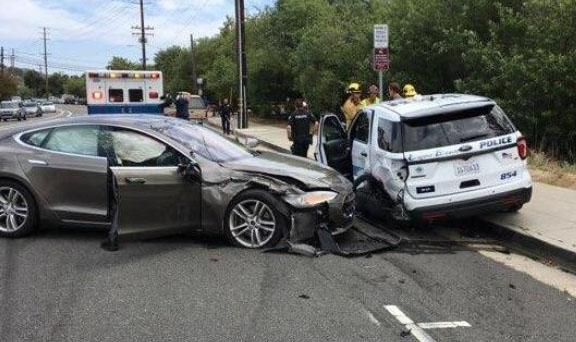Police officer injuries originate from a variety of sources and those sustained during motor vehicle incidents continue to be at the top of injury frequency and severity. It is important to promote motor vehicle safety among officers so they can stay safe while working to make communities safer. During this National Police Week, let’s take a look at the exposure vehicle operations create and how to avoid vehicle accidents and subsequent injuries.
injury frequency and severity. It is important to promote motor vehicle safety among officers so they can stay safe while working to make communities safer. During this National Police Week, let’s take a look at the exposure vehicle operations create and how to avoid vehicle accidents and subsequent injuries.
Over the past four years, police officer injuries associated with motor vehicle incidents accounted for 10% of the total police department injuries and 16% of the law enforcement claim cost for Comp Alliance members. One officer per week has been killed on our nation’s roads on average over the last 10 years. Most years, motor vehicle-related incidents are the main cause of death for officers. From a review of these types of injuries, most incidents were considered to be preventable, including those deemed to be the fault of the officer.
With the majority of the incidents studied to be preventable, officer actions contributed in some part to the incident and injuries sustained. It is therefore necessary to review safe driving techniques with your police officers to confirm they operate motor vehicles safely and under control. Review standard operating procedures for traffic stops and crowd controls, as well as expectations for when the officer will be outside their vehicle. Officer actions which lead to vehicle incidents include unsafe pursuits, unsafe emergency operation, distracted driving, speeding, speed unsafe for conditions, and excessive speed through traffic, among others. Behaviors that contribute to injuries include the failure to wear a seat belt, driving with ‘tunnel-vision’ during pursuits, ignoring signs of roadway dangers, and experiencing increased stress which can negatively impact focus and attention. ‘Tunnel-vision’ is a condition in which officers focus so much on the pursuit that they fail to recognize hazards encountered during the pursuit, including pedestrians, traffic, traffic signals, road conditions, etc.
Training your staff on a comprehensive vehicle operation policy will assist with the prevention of officer injuries from motor vehicle accidents.
Quick Tips
- Require the wearing of seat belts
- Review high speed pursuit policy and include supervisory oversight during such conditions
- Monitor officer abilities during pursuits as they create intense and high-stress conditions
Proper Vehicle Traffic Stop Procedures
- Where to position police cruiser
- How to approach stopped vehicle
- Returning to police vehicle and even proper clothing to wear, as night-time stops require reflective material to be worn to make the officer as visible as possible to oncoming traffic
- An understanding of line-of-site and approaching distances can help motorists be aware of emergency vehicle locations and remember that these conditions change with every vehicle stop
The mental health of officers is vital to maintain safe vehicle operations. Officers need to remain focused on the task at hand, avoid distractions, and remain calm. Practice calming techniques like slow, controlled breathing, maintain contact with supervisors with clear, concise instruction during vehicle stops and pursuits.
Police officer injuries due to motor vehicle accidents can be greatly reduced through proper policy development, training and supervisory oversight. Look to make improvements in your department today.
Additional police safety information is available on the Comp Alliance website. www.compalliance.org
Reach out to Robert Blaisdell, Director of Loss Control for additional information, This email address is being protected from spambots. You need JavaScript enabled to view it., (518) 330-8591

